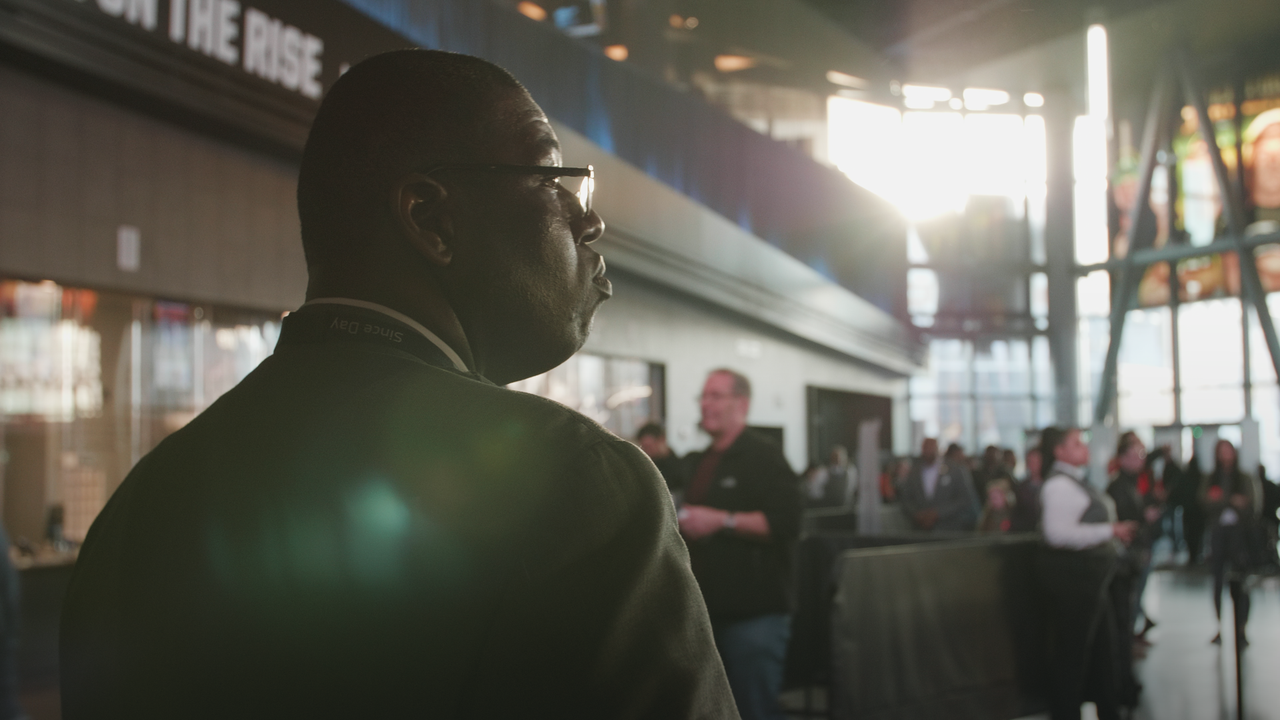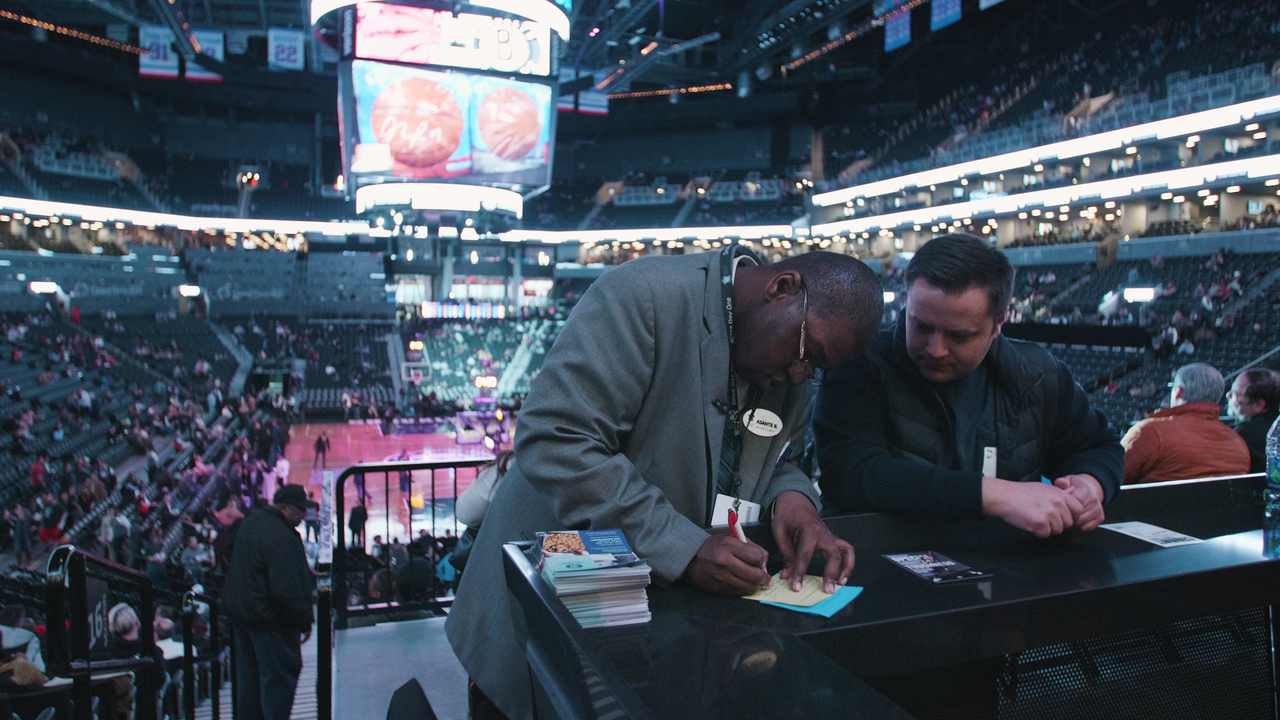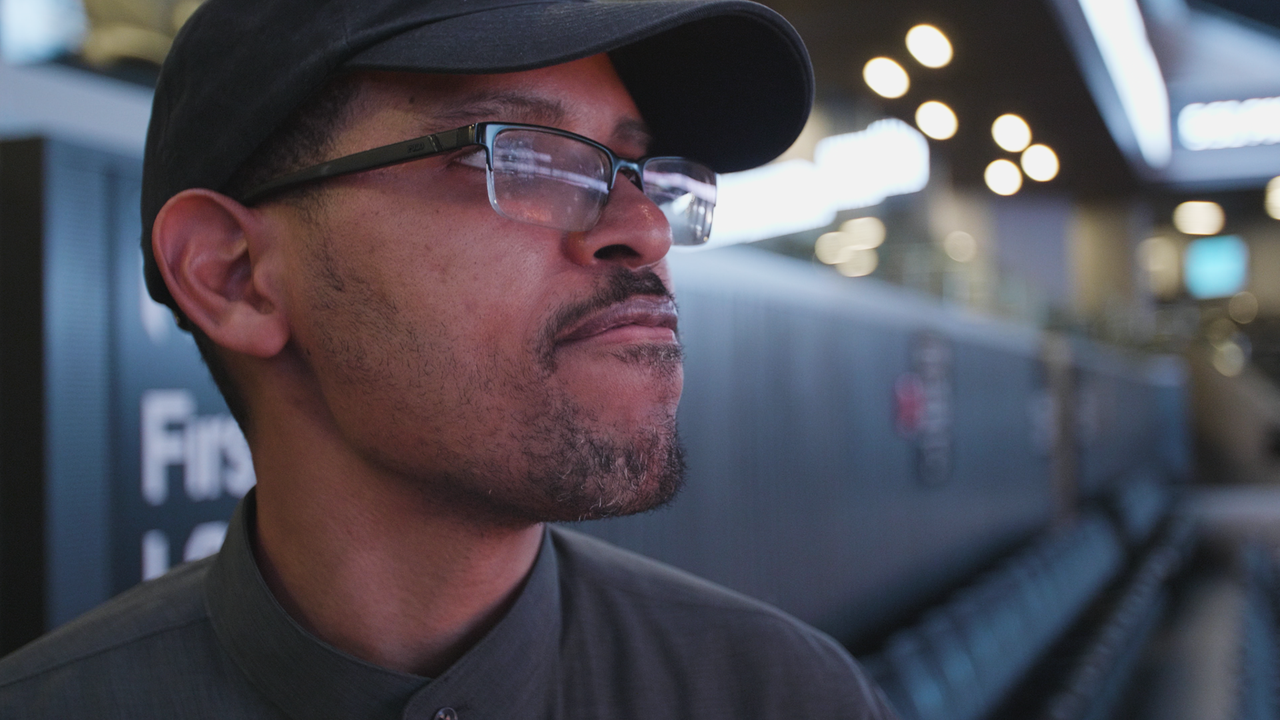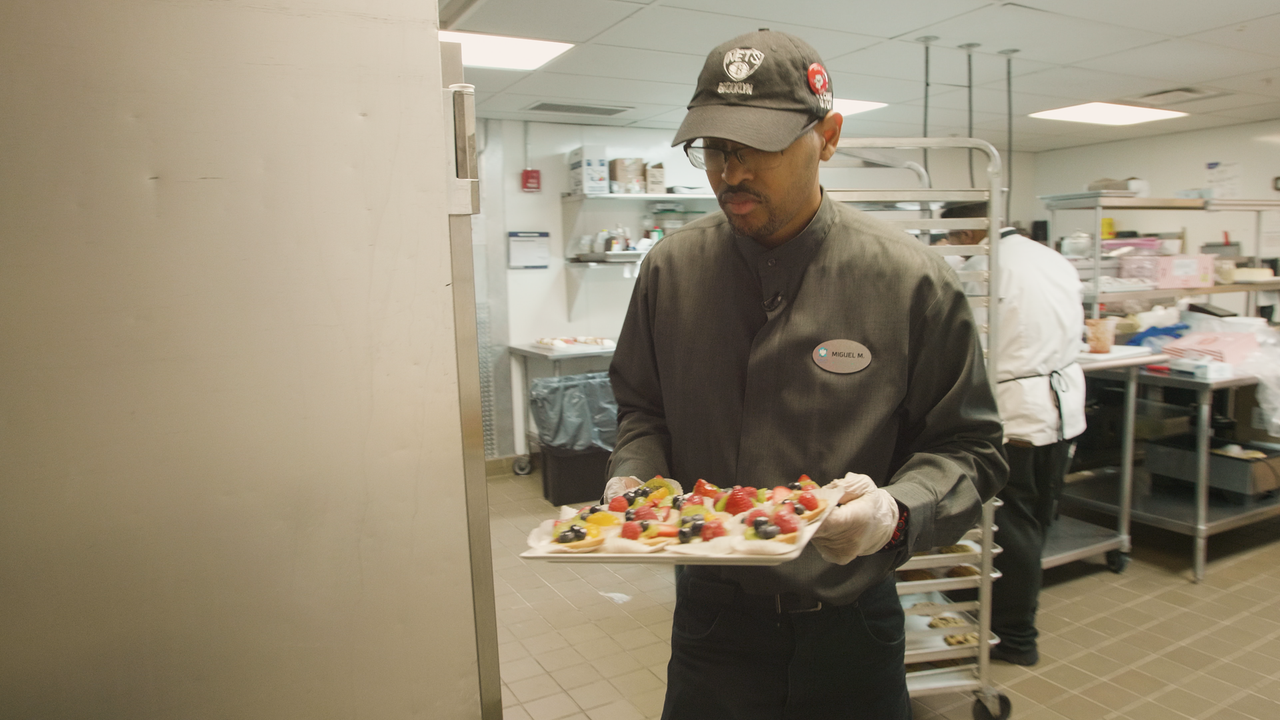Asante Breland was working at Brooklyn’s Barclays Center as an usher when his supervisors took note of the way he helped a guest through an anxiety attack. The interaction led to Breland being recognized as employee of the month and later a promotion to guest services representative, where he now rubs shoulders with the likes of Rihanna, British royals and rapper Flavor Flav in the arena’s VIP box suites.
Breland insists he treats every guest like a VIP, though.
“That’s what my job is,” he told HuffPost.

Thanks to a partnership between New York City-based nonprofit AHRC and the Barclays Center, Brooklyn’s indoor arena and home of the Brooklyn Nets, Breland is one of over 75 employees with intellectual and developmental disabilities (otherwise known as I/DD) who have been hired to work side by side with nondisabled employees since the arena opened in September 2012. The partnership is proving that people with I/DD can enhance and thrive in work environments that typically do not embrace employees with disabilities.
The concept of people with I/DD working in traditionally nondisabled work environments may not sound particularly revolutionary. But what makes this situation unique is that employees with I/DD who work at the Barclays Center are getting paid at least minimum wage, which in New York City is $15 per hour. Breland, for example, makes $19.18 per hour.
That’s not the case for all workers with I/DD.
Thanks to section 14(c) of the Fair Labor Standards Act, a federal law dating back to the 1930s, employers in the U.S. can obtain a 14(c) certificate from the Department of Labor and legally pay employees with disabilities less than minimum wage, also known as a subminimum wage.
The law has led to exploitation. In 2013, an NBC News investigation found that Goodwill Industries, which held a 14(c) certificate, paid disabled employees pennies on the dollar. In some cases, disabled employees were paid as low as 3 or 4 cents per hour.
“The concept behind subminimum wage is really this whole thought that people with disabilities are less productive,” Robyn Powell, a disabled attorney, writer and disability rights advocate, told HuffPost. “Therefore they should receive less money. And you know, frankly, if everyone was paid based on their productivity, we’d all be getting paid a lot less.”
She added, “How many times a day do people check Facebook at work?”
But for employees working at Barclays Center, things are different. In addition to getting paid fairly, these individuals aren’t stuck in entry-level positions. Some, like Breland, are working as guest service representatives in VIP suites, while others are running the arena’s exclusive sushi, seafood, and celebrity-filled food court — a swanky spot located close to the Nets’ locker room where models Karlie Kloss and Ashley Graham were dining during one of HuffPost’s visits.

Not too shabby, considering that people with disabilities are more than twice as likely to be unemployed as nondisabled people, according to the Bureau of Labor Statistics.
“[The people who run the arena] actually think that people that we have there are assets to the Barclays Center,” Shauna Lozada, director of corporate partnerships and business development at AHRC, told HuffPost.
In his role, Breland also helps disabled guests with wheelchair escorts, aiding them in navigating the sprawling arena and getting them to their seats.
“I was so determined to get something going so I could contribute back to society and help people,” Breland said of his experience seeking work throughout the years. “That gave me confidence.”
AHRC provides Barclays Center with work coaches for its employees with I/DD. These individuals, employed through AHRC, are on-site at the Barclays Center to help support employees with I/DD by making sure they understand their jobs and offering any accommodations they may need.
Opportunities for people with I/DD like those at Barclays Center are rare. Many people with I/DD find employment in sheltered workshops, also known as work or rehabilitation centers, where they are often paid subminimum wage.
Sheltered workshops, which typically hold a 14(c) certificate, are supposed to act as “rehabilitation services, day treatment, training, and/or employment opportunities to individuals with disabilities,” according to the Department of Labor.
The idea behind these programs is that they’re supposed to consist of “prevocational group classes, transitional employment experiences, and closely supported job placement.” In these environments, people with I/DD receive accommodations for their disabilities and are able to work with peers who have similar life experiences. There, they are occupied for several hours a week gaining a sense of purpose or preparing for jobs in nondisabled work environments.

“When I go visit some of our members [in] community rehabilitation programs around the country, there is more joy in the air than I ever have seen in any place I have worked,” Kate McSweeny, vice president of government affairs and general counsel for ACCSES, a nonprofit that advocates and provides services for people with disabilities, said of its members working in sheltered workshops.
But as ideal as these sheltered workshops sound, many disability rights activists argue that paying disabled people in these programs less than minimum wage violates their civil rights. They also feel that sheltered workshops keep people with I/DD segregated from their larger communities, lending to popular social assumptions that they’re not capable of doing more.
“People without disabilities benefit from disabled people being around them,” Powell said. “The fact that we’re still segregating in 2019 is pretty alarming.”
Powell also argued that a very small percentage of the people who are sent to these pre-vocational programs actually leave for jobs that pay at least the minimum wage. A report conducted by the National Council on Disability found that only 5% of “sheltered workshop employees left to take a job in the community.”
That’s one of several reasons advocates want sheltered workshops and subminimum wages to be a thing of the past, which may soon be the case. A provision tucked inside the Raise the Wage Act, a bill designed to raise the federal minimum wage to $15 per hour by 2025, would eliminate 14(c) certificates. The U.S. House of Representatives passed the bill last week.
Though this could potentially ensure that people with disabilities will no longer be exploited, McSweeny believes that eliminating the certificate (which she refers to as “special minimum wage”) and the structure of sheltered workshops could have devastating consequences for people with I/DD, arguing that there aren’t Barclays Centers in more rural areas across the country.
“A whole lot of other people across the country are starving, they’ll be starving because they got rid of [sheltered workshops],” she said. “And that happens in states where they got rid of it, people who have nowhere to go in the morning. People who are isolated in their homes … Because there’re not places that are willing to accommodate them and their disabilities.”

People with I/DD have also expressed their concerns about leaving the familiarity of sheltered workshops for what some call “outside jobs.”
In 2015, NPR spoke to several people with I/DD working in a sheltered workshop called Production Unlimited in Watertown, New York, and reported that most of these people enjoyed their jobs and felt unease about the possibility of leaving.
Miguel Mondesir, who has worked at the Barclays Center as a food runner since 2012, admitted to HuffPost that he still feels anxiety working in a nondisabled environment.
“When I got the job [at the Barclays Center], I was nervous, like, to do well at it,” he told HuffPost. “So, I always think I’ll get fired. So I try my best at everything.”
And although he has received support from some of his nondisabled co-workers, he alluded to friction he’s experienced with others.
“The other cooks said, ‘Stop standing like a log,’” he said of one experience. “And it made me feel, like, I’m already nervous, I don’t want them to, like, make me more nervous. But I understand they’re trying to help me, but the way that they said it was the wrong way to say it.”
When it comes to hiring people with I/DD, advocates agree that the societal impact is huge.
“I think that people start to break down their walls,” Lozada told HuffPost. “ … People start to come out and tell you about their experiences and that they might have a family member who is disabled. They themselves might have a disability that they were afraid to disclose … they begin to think that it’s normal to disclose [them] and that they’re not going to be discriminated against.”
